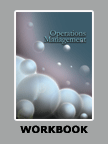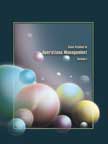Operational Restructuring: The Philips India Way




|
|
ICMR HOME | Case Studies Collection
Case Details:
Case Code : OPER019
Case Length : 11 Pages
Period : 1997 - 2002
Organization : Philips India
Pub Date : 2002
Teaching Note : Available
Countries : India
Industry : Consumer Electronics
To download Operational Restructuring: The Philips India Way case study
(Case Code: OPER019) click on the button below, and select the case from the list of available cases:

Price:
For delivery in electronic format: Rs. 300;
For delivery through courier (within India): Rs. 300 + Rs. 25 for Shipping & Handling Charges
» Operations Case Studies
» Case Studies Collection
» ICMR HOME
» View Detailed Pricing Info
» How To Order This Case
» Business Case Studies
» Case Studies by Area
» Case Studies by Industry
» Case Studies by Company
Please note:
This case study was compiled from published sources, and is intended to be used as a basis for class discussion. It is not intended to illustrate either effective or ineffective handling of a management situation. Nor is it a primary information source.
|
|
<< Previous
Background Note Contd...
|
By the late 1990s, PIL had five manufacturing units situated in Salt Lake,
Kolkata (for CTVs), Pimpri (near Pune for audio products and industrial
lighting), Kalwa (near Thane for electrical lighting), Kota (in Rajasthan for
picture tubes) and Loni (in Maharashtra for electronic components).
In 1997, Philips NV restructured its business portfolios and processes
worldwide. This had wide-ranging consequences for PIL's operations. The
company examined the long-term viability and profitability of electronic
weighing, plastic and metal ware businesses and critically reviewed
manufacturing processes of the consumer electronics business, specifically the
TV business, to cut costs and improve flexibility.
|
|
Measures to this effect were put in place.
In 1998, Philips NV increased its holding in its subsidiary Punjab Anand Lamp
Industries (PALI) from 39.96% to 51%. With PIL holding around 28.8% in
PALI's expanded capital, the joint holding of the Philips group in the
company increased to 79.8%.
Restructuring Initiatives
In the late 1990s, the CTV market was characterized by intense
competition and unprecedented price erosion. In an attempt to improve
cash flows and bring down inventories, the company restructured its CTV
manufacturing process.
|
|
PIL decided to leave the relatively low value
adding manufacturing processes such as final assembly and testing to
supplier-partners who were close to the marketplace. These
supplier-partners not only had much lower cost-structures, they were
also far more flexible. By having several supplier-partners in different parts of the country, PIL
was able to reach out to customers in the shortest possible time and
with very low inventory in the pipeline. In June 1997, PIL shifted the final component assembly process for CTVs out of its at Salt Lake factory to three new assembling centers in West Bengal, Punjab and Uttar Pradesh, to keep the assembling unit of the final product as close to the customer as possible. |
PIL also started outsourcing low value components from local players, while concentrating on the production of high-value items...
Excerpts >>
|
|



